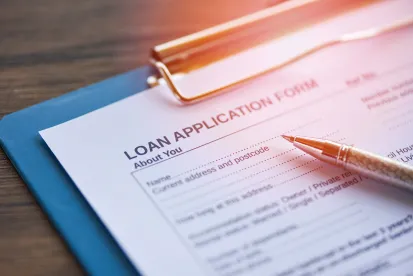Effective October 8, 2020, the United States Small Business Administration streamlined the forgiveness process for Paycheck Protection Program borrowers with loans of $50,000 or less. The simplified forgiveness application permits these small PPP borrowers to disregard the penalties for reductions in full time equivalent employee headcounts or undo cuts in salaries and hourly wages, which will likely assure full forgiveness if these borrowers used up all of their PPP loan proceeds. These penalties for headcount and compensation cuts were previously major hurdles for small businesses struggling to open again. This streamlined process is not available to members of affiliated groups with aggregate PPP loans (among all affiliated entities) of $2,000,000 or more.
Background
On March 27, 2020, the President signed the Coronavirus Aid, Relief, and Economic Security Act of 2020 (the “CARES Act”) into law. Section 1102 of the CARES Act temporarily permits the SBA to guarantee 100% of loans granted under the Paycheck Protection Program (“PPP”). Under the PPP, the United States Small Business Administration (the “SBA”) guaranteed forgivable loans to small business concerns and other qualifying borrowers. The PPP was closed to new borrowers since August 8, 2020, but millions of qualified businesses were able to obtain PPP loans prior to the deadline.
Loan Forgiveness Accommodation for Smallest PPP Borrowers
Whether a PPP loan is forgiven in full or in part is dependent on a number of factors. Under the CARES Act, use of proceeds, fluctuations in employee headcount, changes in salaries and hourly rates, and other factors all influence whether a PPP loan will be forgiven in whole or in part. Many small businesses with PPP loans were unlikely to qualify for forgiveness because they weren’t able to restore headcounts, salaries or hourly rates because of the ongoing economic downturn and government-mandated health and safety restrictions. This glitch in the PPP rules was well-known and the SBA was long expected to make accommodation for affected small businesses.
Effective October 8, 2020, the SBA exempted the smallest PPP borrowers from the penalties for reductions in full time equivalent employee headcount and cuts in salaries and hourly rates. Under new Form 3508S and the related instructions and guidance, a PPP borrower with a loan of $50,000 or less, who has otherwise complied with the PPP rules and regulations, can completely disregard these penalties. The PPP borrower must still have used the PPP loan only for qualified expenses, must have abided by the 40% cap on non-payroll costs expenses, and otherwise complete a forgiveness application.
Importantly, this new, streamlined process is not available to PPP borrowers who are part of an affiliated group having PPP loans of $2,000,000 or more in the aggregate. Whether a PPP borrower has affiliates that must be aggregated for this purpose is a factual question, so PPP borrowers hoping to avail themselves of these new rules should dust off their analysis of the SBA affiliation rules.
While the SBA stopped short at blanket forgiveness (the PPP borrower must still submit the application), this streamlined forgiveness process all but assures forgiveness for the smallest PPP borrowers who otherwise did everything right. And with the further simplified form (beyond what even the EZ form required), it should cut down on administrative costs for PPP borrowers still weathering the current economic crisis.




 />i
/>i

